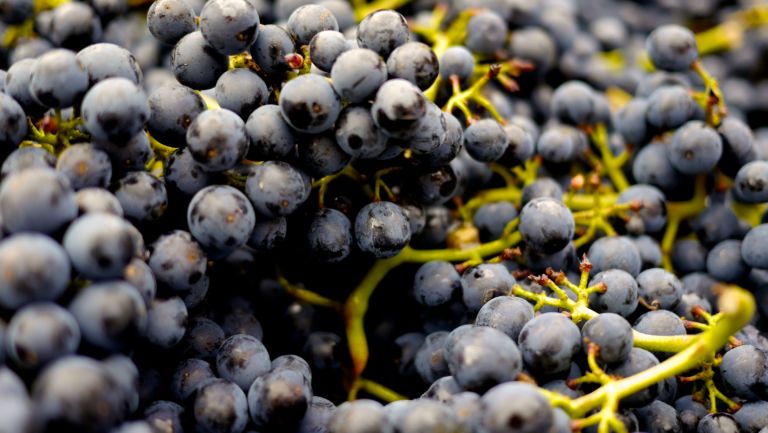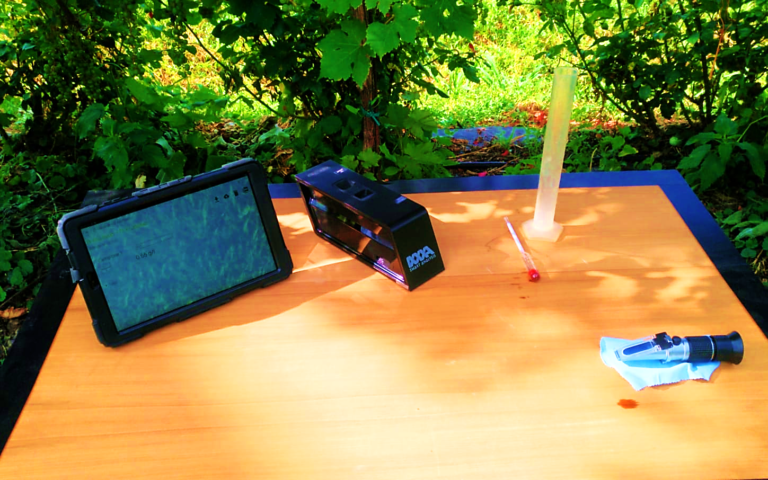Article written by PhD. Marco Sozzi, University of Padova
The dynamics of maturation
As the growing season progresses, the monitoring of the grape quality becomes fundamental to define actions to reach production and oenological objectives.
Starting from veraison, several processes begin within the bunch leading to the complete technological, phenolic and aromatic maturation of the grapes. The accumulation of solutes inside the grape (mainly glucose and fructose) is followed by the increase in volume consequent to the greater mobilization of water inside the grape. The increase in the glucose and fructose content occurs mainly at the expense of malic acid and partially of tartaric acid. Despite the dynamics of maturation is influenced by genotype and climate, agronomic management may influence this process.
The succession of vintages with fluctuating climatic conditions has made wine operators aware of the consequences of climate change on the quantity and above all on the quality of the grapes which will then be vinified.
Temperatures above the seasonal average during the ripening phase can lead to a rapid degradation of malic acid and a consequent increase in the sugar content of the grapes. This aspect, despite ensures the achievement of optimal sugar levels in some grapes, can make it difficult to harvest grapes with a total acidity greater than 6-7 g / l, which are particularly necessary for grapes with white berry.
Otherwise, in dark berried grapes the excessive sugar accumulation in the grape can lead to difficulties in the winemaking phase due to the excessive alcoholic content. During the maturation, moreover, there is an increase in the pH, the value of which should not exceed 3.5 in order to guarantee chemical and microbiological stability to the wine.

Maturity monitoring
The detection of glucose, fructose, malic acid, tartaric acid, total acidity and pH can be a fundamental tool for planning the harvest and any agronomic interventions to correct possible problems in the acid-sugar balance within the grape (defoliation, thinning of bunches, foliar fertilizations, etc.).
Just before the grape harvest, the determination of the ammonia nitrogen and alpha amino nitrogen content can give some indications on the future trend of the fermentations, while the analysis of the concentration of anthocyanins in the peel can be used to estimate the phenolic profile.
The sampling technique is of fundamental importance, due to the relative qualitative heterogeneity that exists both at the plant and cluster level, depending on the position with respect to the strain and the exposure.
The monitoring of grape quality during ripening should include sampling carried out at 7/10 day intervals also according to the climatic trend. Sampling can involve the collection of 250 berries or alternatively portions of the bunch, in both cases located in different regions of the crown and on different plants located throughout the extension of the plot.
This sampling procedure can be made faster by having a prior knowledge of the spatial variability of the vineyard thanks to vegetation vigor maps produced taking advantage from satellites, drones or proximal sensors. In this sense, the grape sampling can also be spatialized in order to investigate the progress of ripening in different areas.
Once the samples have been collected, the analysis protocol conventionally adopted is based on theuse of expeditious methods such as the refractometer or densimeter to estimate sugar content. Although these instruments are cheap and quick to use, data obtained from them are subject to fluctuations due in particular to temperature. As for the definition of total acidity, the commonly used procedure involves the titration of a previously ammosted sample. In some cases, this analysis can be complex, especially for small and multifunctional vinery or in the case of a large number of samples to be analyzed.
In this context, the use of Smart Analysis can be seen as a valid “upgrade” for this instrumentation, since it can also be used directly in the field. Quality monitoring during the ripening phase through Smart Analysis can be seen as a first step towards a Viticulture strategy of Precision and Digital at company level.

references:
Van Leeuwen C. & Destrac-Irvine A. (2017). Modified grape composition under climate change conditions requires adaptations in the vineyard. OENO One, 51(2), 147-154. https://doi.org/10.20870/oeno-one.2017.51.2.1647
Palliotti A., Poni S. & Silvestroni O. (2018). Manuale di Viticoltura (Viticulture Manual).
IF YOU WANT TO KNOW MORE ABOUT NEW TECHNOLOGIES AND TOOLS FOR QUALITY CONTROL IN THE VINEYARD AND IN THE CELLAR, FILL OUT THE FORM BELOW AND WE WILL SEND YOU A FREE GUIDE WITH ALL THE INFORMATION USEFUL TO YOU!